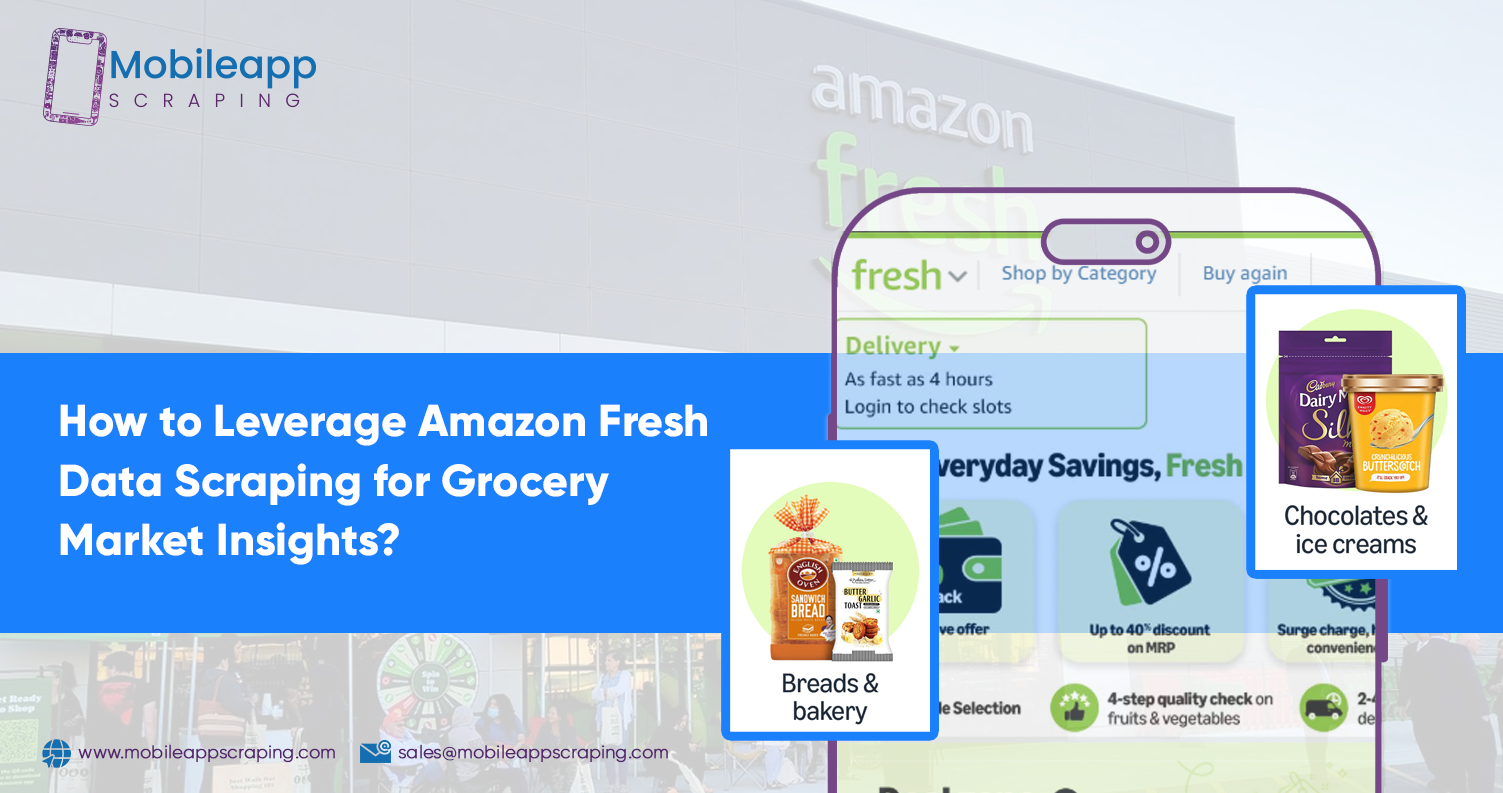
How to Leverage Amazon Fresh Data Scraping for Grocery Market Insights?
Introduction
In today’s fiercely competitive grocery market, data-driven decision-making is no longer just an advantage—it’s a necessity. With Amazon’s online grocery delivery service continuously expanding globally, businesses are turning to Amazon Fresh Data Scraping as a powerful tool to gain competitive intelligence and deeper market insights.
The digital evolution of grocery shopping has unlocked vast datasets containing critical information on pricing strategies, product assortments, consumer preferences, and regional variations. Businesses can convert this raw data into actionable insights that drive profitability and market positioning by leveraging strategic data collection techniques.
This in-depth guide delves into how retailers, manufacturers, market researchers, and e-commerce specialists can capitalize on Amazon Fresh Grocery Data to stay ahead in the rapidly evolving grocery landscape. From technical implementation to practical applications and ethical considerations, we’ll explore everything you need to know about harnessing data for success in the online grocery industry.
Understanding the Value of Amazon Fresh Data
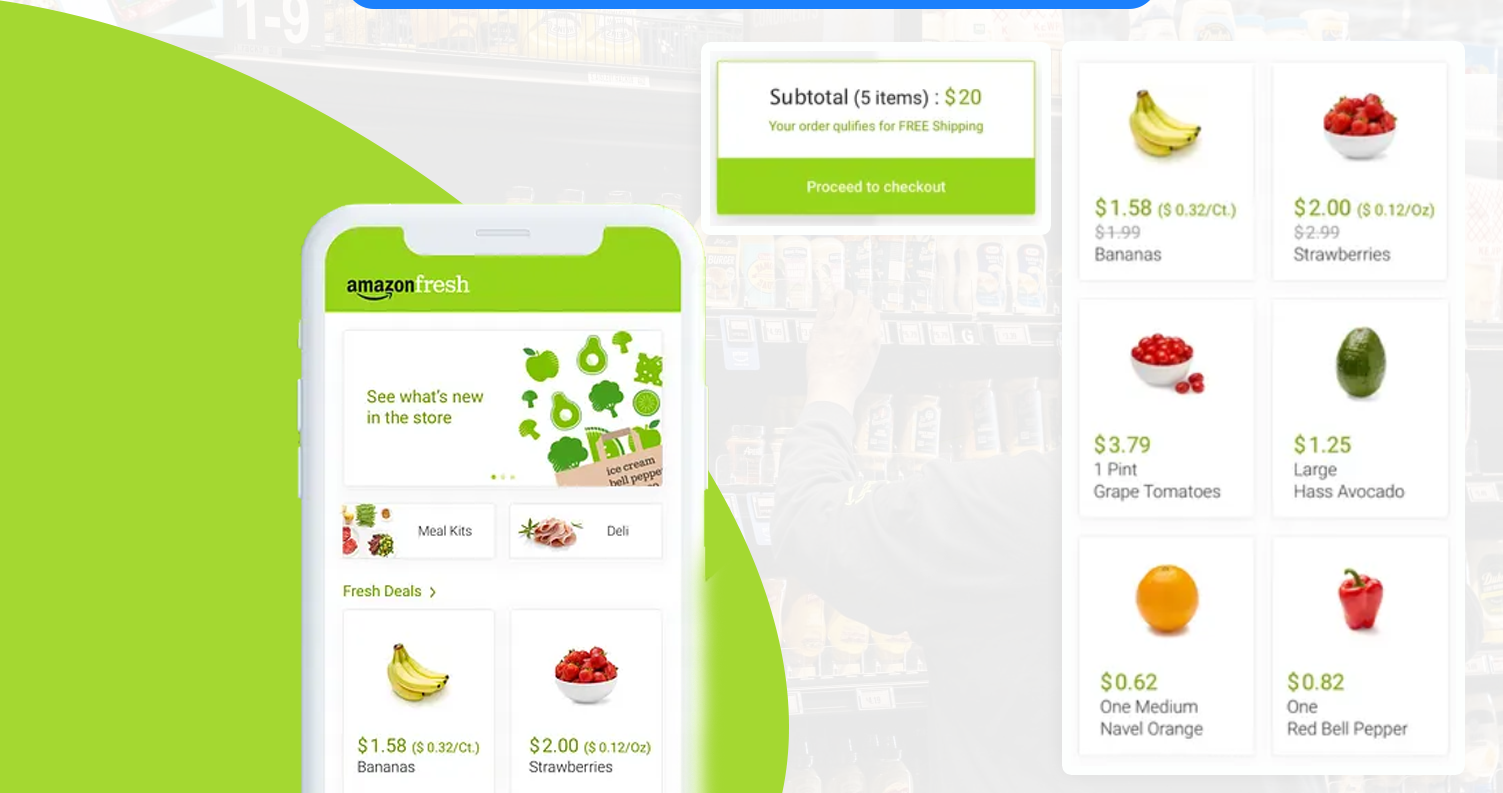
Amazon Fresh has transformed the grocery delivery sector, providing consumers seamless access to fresh produce, pantry essentials, and specialty products. However, beyond its convenience-driven platform role, Amazon Fresh is a powerful source of market intelligence for businesses looking to refine their strategies and stay ahead of industry trends.
The significance of Amazon Fresh Grocery Data extends far beyond basic price tracking. A deep analysis of these data sets enables businesses to:
- Identify emerging product trends before they gain widespread traction.
- Assess competitive positioning by evaluating thousands of SKUs in real time.
- Monitor promotional strategies to gauge their effectiveness and impact.
- Track inventory patterns to understand supply chain dynamics and product availability.
- Analyze regional pricing variations and tailor market-specific strategies accordingly.
- Extract consumer insights by examining reviews, ratings, and customer sentiment.
This data-driven intelligence is instrumental in navigating an increasingly competitive and technology-driven grocery landscape for manufacturers, distributors, and competing retailers. Businesses that leverage Amazon Fresh Data effectively can enhance decision-making, optimize pricing strategies, and align their offerings with evolving consumer demands.
Technical Approaches to Data Collection
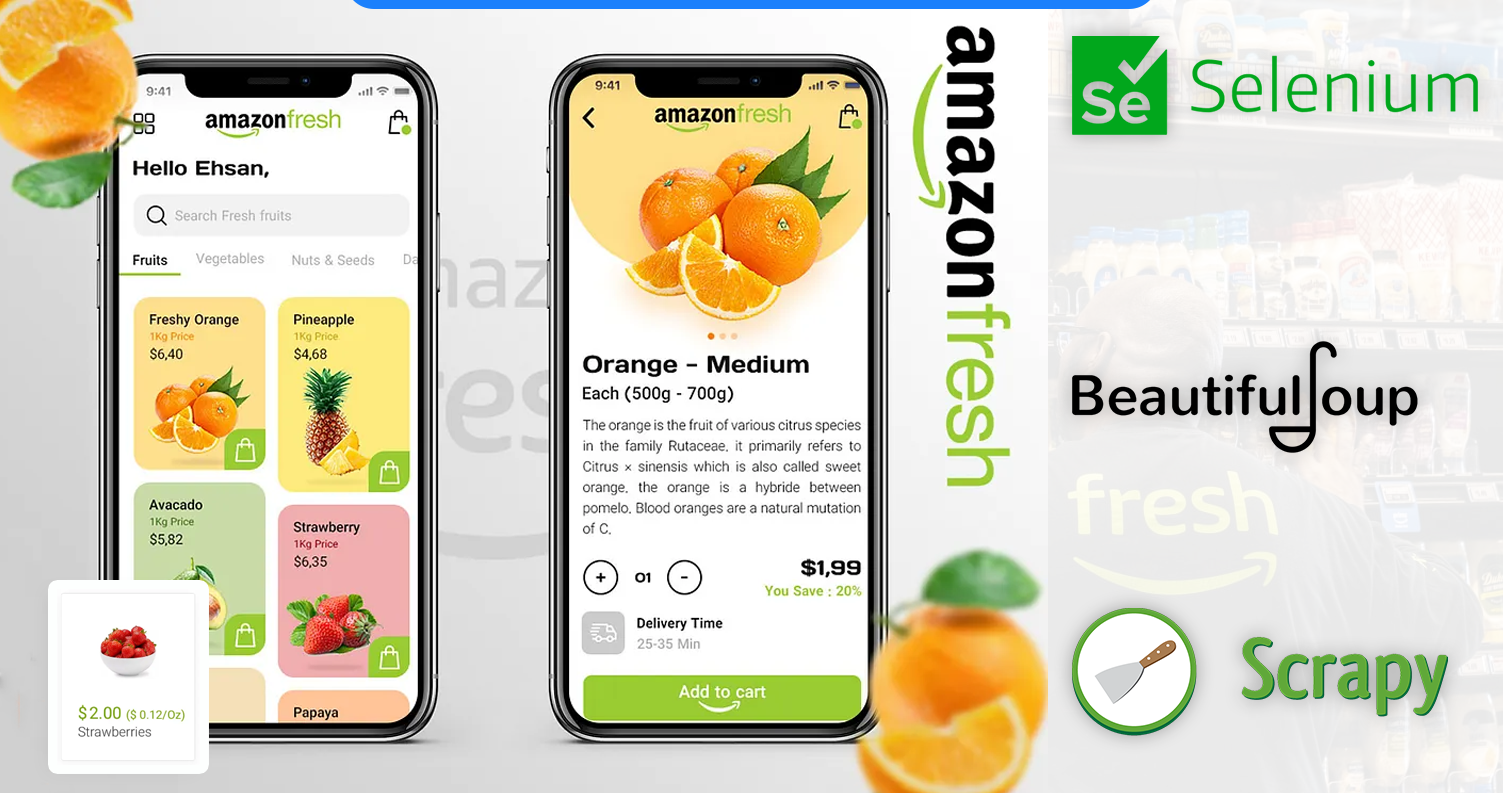
Extracting valuable insights from Amazon Fresh requires a strategic selection of technical methodologies, each offering distinct benefits and challenges.
1. Web-Based Data Collection :
Traditional web scraping remains a widely used method for extracting data from Amazon's website, but it demands a well-structured approach to ensure efficiency and accuracy.
This approach provides:
- Developing custom scripts using Python-based libraries such as BeautifulSoup, Scrapy, or Selenium for automated data extraction.
- Implementing proxy rotation to prevent IP bans and maintain uninterrupted access.
- Utilizing browser emulation techniques to handle dynamic JavaScript-rendered content effectively.
- Conducting regular maintenance to adapt to frequent website structure updates and anti-scraping measures.
2. Mobile-First Approaches :
As more consumers shift to mobile shopping, the ability to Scrape Amazon App Data has become increasingly important.
This approach provides:
- Leveraging specialized tools to access and extract structured data from mobile app environments.
- Utilizing techniques like app decompilation or API interception to retrieve data beyond traditional web scraping capabilities.
- Gaining access to insights on mobile-specific features, dynamic pricing models, and in-app promotions that may not be available via web-based scraping.
3. API Integration :
Integrating with an Amazon Fresh Data API can be a powerful solution for organizations seeking reliable and structured data access.
This approach provides:
- A stable data structure with consistent formatting reduces the need for complex parsing.
- Higher data quality and completeness, ensuring more accurate insights.
- Better compliance with terms of service, mitigating legal risks associated with unauthorized data collection.
- Lower maintenance efforts, as APIs generally provide structured and well-documented access points.
However, official API access can be costly or restricted, prompting many businesses to develop custom API solutions or partner with specialized data providers for seamless data retrieval.
Key Data Points Worth Collecting

Gaining practical market intelligence begins with gathering the most relevant data points. When scraping Amazon Fresh, focusing on these critical elements can provide valuable insights:
1. Product Information
A thorough analysis of Amazon Fresh Product Data should include:
- Complete product titles and descriptions to understand branding and positioning.
- Brand information and manufacturer details for supplier insights.
- Product categories and hierarchical classification to track market segmentation.
- Pack sizes and variations that influence consumer purchasing decisions.
- Product imagery and visual merchandising strategies that impact conversions.
- Nutritional information and ingredients for regulatory compliance and consumer preferences.
2. Pricing Intelligence
Tracking Amazon Fresh Product Prices is essential for competitive analysis. Key pricing data includes:
- Base price points to benchmark against competitors.
- Historical price tracking to identify pricing trends and fluctuations.
- Prime member special pricing and exclusive discounts.
- Bundle deals and quantity discounts that affect bulk purchasing behavior.
- Unit pricing for comparison shopping, helping consumers evaluate value.
- Regional price variations reflect location-based pricing strategies.
3. Availability and Inventory Signals
Monitoring product availability provides insights into supply chain efficiency and demand trends:
- In-stock/out-of-stock status to assess product turnover.
- Inventory limitations ("Only five left in stock"), signaling urgency or scarcity.
- Delivery availability windows that influence consumer purchasing decisions.
- Product replacement suggestions, revealing cross-selling opportunities.
- Restocking patterns and frequency indicate demand cycles.
4. Customer Sentiment Data
Understanding customer perception through Amazon Fresh Reviews Data offers valuable feedback:
- Star ratings and distribution to measure product satisfaction.
- Review volume and velocity, revealing consumer engagement levels.
- Sentiment analysis from review text to uncover emerging trends and concerns.
- Question and answer content that provides additional product insights.
- "Purchased together" relationships, highlighting product bundling trends.
5. Delivery and Fulfillment
Analyzing Amazon Fresh Delivery Data helps businesses optimize logistics and customer service:
- Delivery fee structures that impact purchasing behavior.
- Availability windows by location are crucial for regional demand analysis.
- Minimum order thresholds affecting cart size and profitability.
- Same-day vs. scheduled delivery options, shaping consumer expectations.
- Special handling for perishable items, ensuring compliance with storage requirements.
Businesses can develop a comprehensive market intelligence system that enhances strategic decision-making and competitive positioning by systematically collecting and analyzing these key data points.
Practical Applications of Amazon Fresh Market Intelligence
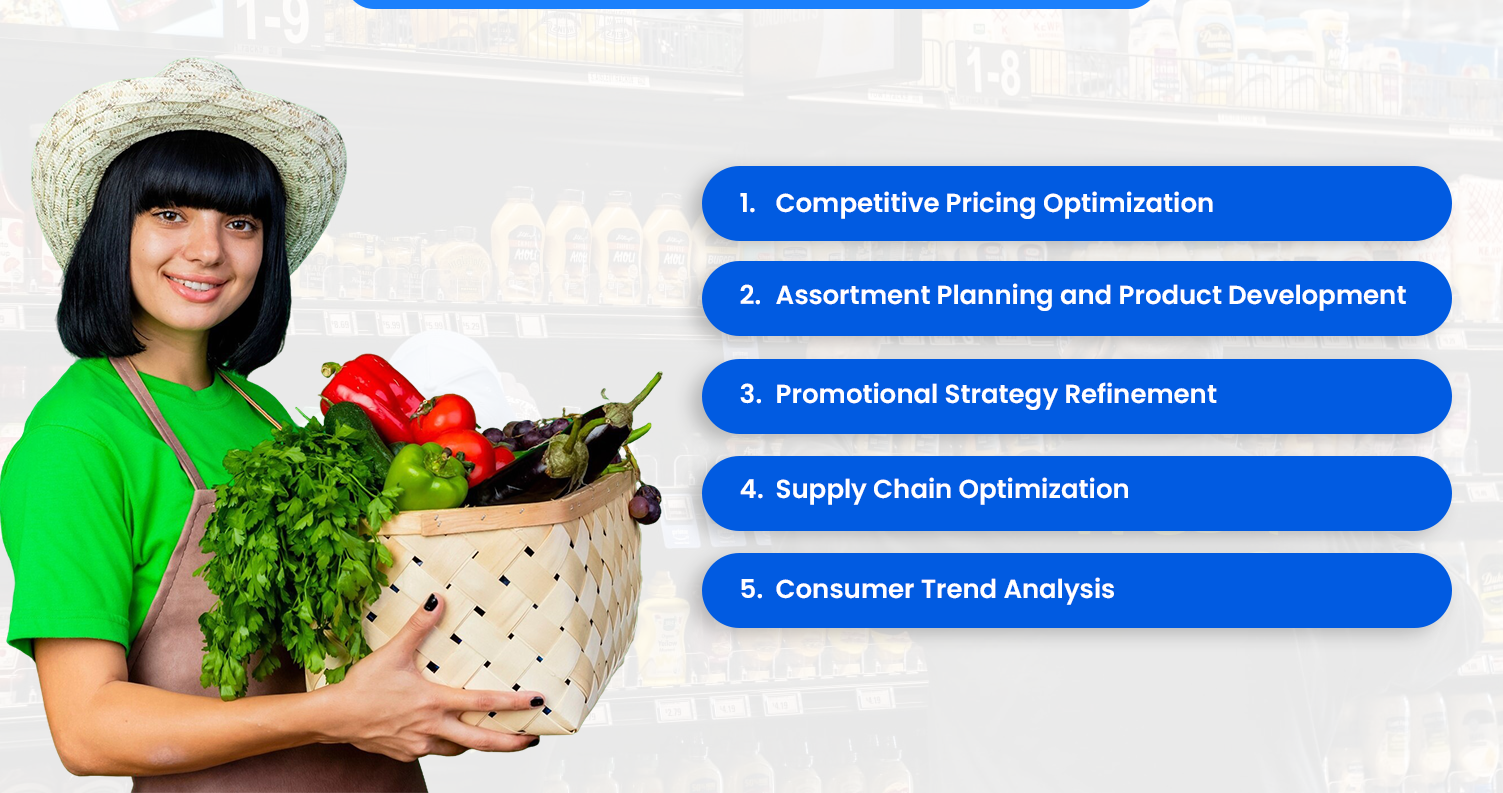
The actual value of data emerges when it's translated into actionable business strategies. Here are key applications for Amazon Fresh Data Scraping intelligence:
1. Competitive Pricing Optimization
Accurate price monitoring empowers businesses to make data-driven pricing decisions by:
- Establishing optimal price points for key competitors, ensuring competitive positioning.
- Evaluating price elasticity across various product categories to maximize profitability.
- Detecting and swiftly responding to real-time competitor promotions prevents potential revenue loss.
- Implementing dynamic pricing strategies that adapt to changing market conditions and consumer demand.
2. Assortment Planning and Product Development
A comprehensive analysis of Amazon's product catalog reveals critical insights that support the following:
- Identifying market gaps and uncovering lucrative opportunity areas for product expansion.
- Understanding competitive product feature sets to refine existing offerings and develop innovative solutions.
- Tracking new product introductions and measuring their performance to assess consumer reception.
- Evaluating private label strategies, assessing market success, and refining branding approaches.
3. Promotional Strategy Refinement
By systematically tracking Amazon's promotional activities, businesses can enhance their marketing efforts by:
- Assessing the effectiveness of various promotional mechanics, optimizing return on investment.
- Identifying seasonal promotional trends to strategically time discounts and special offers.
- Understanding category-specific promotional strategies, ensuring alignment with industry best practices.
- Determining the ideal promotional depth and frequency to maximize customer engagement and sales impact.
4. Supply Chain Optimization
Insights derived from Amazon Fresh Delivery Data play a pivotal role in enhancing supply chain efficiency by:
- Mapping geographic demand patterns to optimize inventory distribution.
- Monitoring out-of-stock frequency and duration to minimize lost sales opportunities.
- Analyzing substitution behaviors when preferred products are unavailable, identifying alternative demand trends.
- Tracking seasonal demand fluctuations to adjust supply chain operations accordingly.
5. Consumer Trend Analysis
Deep insights from review and rating data enable businesses to stay ahead of evolving consumer preferences by:
- Identifying emerging consumer trends, ensuring timely product innovation.
- Detecting quality or formulation concerns early allows for proactive improvements.
- Understanding regional taste preferences, facilitating localized marketing and product adjustments.
- Monitoring shifting consumer priorities, such as the growing demand for organic, sustainable, or ethical products.
By leveraging systematic data collection and analysis, businesses can transform raw market data into actionable strategies and gain a decisive competitive edge.
Regional Insights: USA, UK, and India Market Analysis
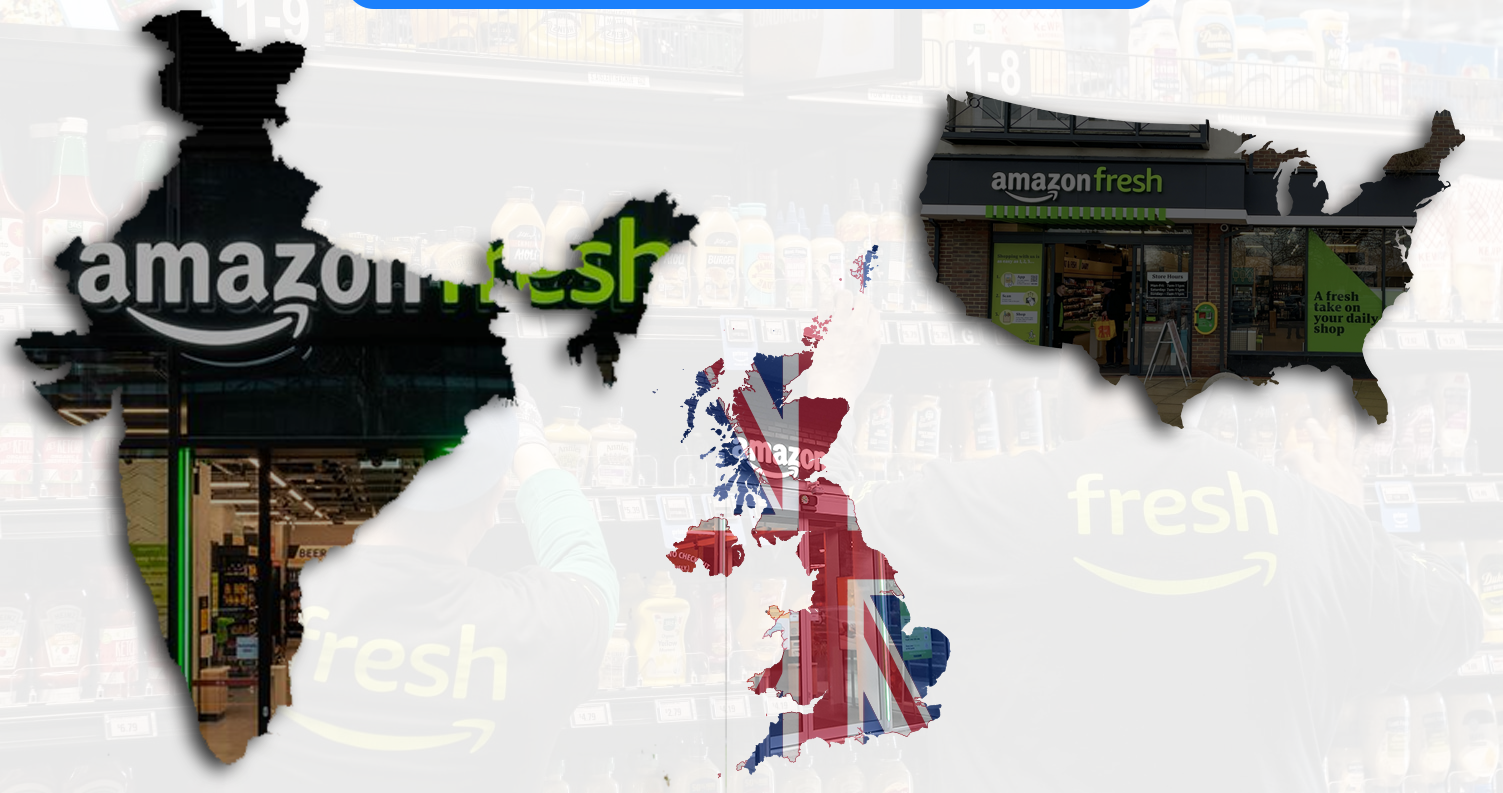
Amazon Fresh operates across multiple regions, each with its distinct market dynamics. Conducting a regional analysis helps uncover valuable comparative insights into pricing strategies, consumer preferences, and operational models.
1. United States Market :
Insights gathered from Amazon Fresh USA Grocery Scraping highlight key trends shaping the market landscape:
- Highly competitive pricing : To capture consumer demand, brands engage in aggressive pricing strategies, especially in staple categories.
- Organic & Natural Focus : Increasing consumer preference for healthier food drives this trend.
- Regional Price Variations : Prices fluctuate across metropolitan areas due to differences in local demand, logistics, and supply chain efficiencies.
- Private Label Expansion : Amazon is strengthening its in-house brands to compete with traditional grocery retailers.
- Whole Foods Integration : A seamless omnichannel experience is created by leveraging premium and organic product offerings.
2. United Kingdom Trends
A comprehensive analysis of Amazon Fresh UK Grocery Data reveals key insights into consumer behavior and operational strategies, highlighting distinct market preferences and fulfillment approaches:
- Compact Pack Sizes : UK consumers favor smaller package sizes due to frequent grocery shopping habits and smaller household sizes, contrasting with bulk purchasing trends in other regions.
- Local Product Focus : The UK market strongly favors locally sourced, high-quality grocery items, which influences product assortments and supplier partnerships.
- UK Promo Cycles : Discounts and promotional campaigns are strategically scheduled to align with regional shopping behaviors and peak purchasing periods.
- Custom Delivery Model : Amazon UK adapts its grocery delivery model with unique fee structures and minimum order thresholds, distinct from its U.S. counterpart.
- Private Label Strategy : Private label strategies in the UK cater to local consumer preferences, differentiating product offerings from those in the U.S.
3. India Market Dynamics
The shifting landscape of Amazon Fresh India Data highlights a uniquely structured market shaped by regional preferences and consumer behaviors:
- Food Preferences : The product assortment is meticulously curated to align with India's diverse culinary traditions, ensuring relevance across various regions.
- Optimized Pack Sizes : Packaging is strategically adjusted to offer affordability and convenience, catering to typical Indian household consumption patterns.
- Tailored Category Mix : The grocery selection prioritizes fresh produce, grains, and regional staples, reflecting India’s distinct dietary habits.
- Pricing Strategies : Pricing strategies are adapted for metropolitan areas and tier-2 cities, balancing affordability with competitive market dynamics.
- Marketplace Integration : Amazon Fresh seamlessly integrates grocery offerings with its broader retail ecosystem, enhancing cross-category shopping experiences.
These variations across regions highlight the critical role of market-specific intelligence in optimizing pricing strategies, curating product assortments, and driving informed strategic decisions in online grocery retail.
How Mobile App Scraping Can Help You?
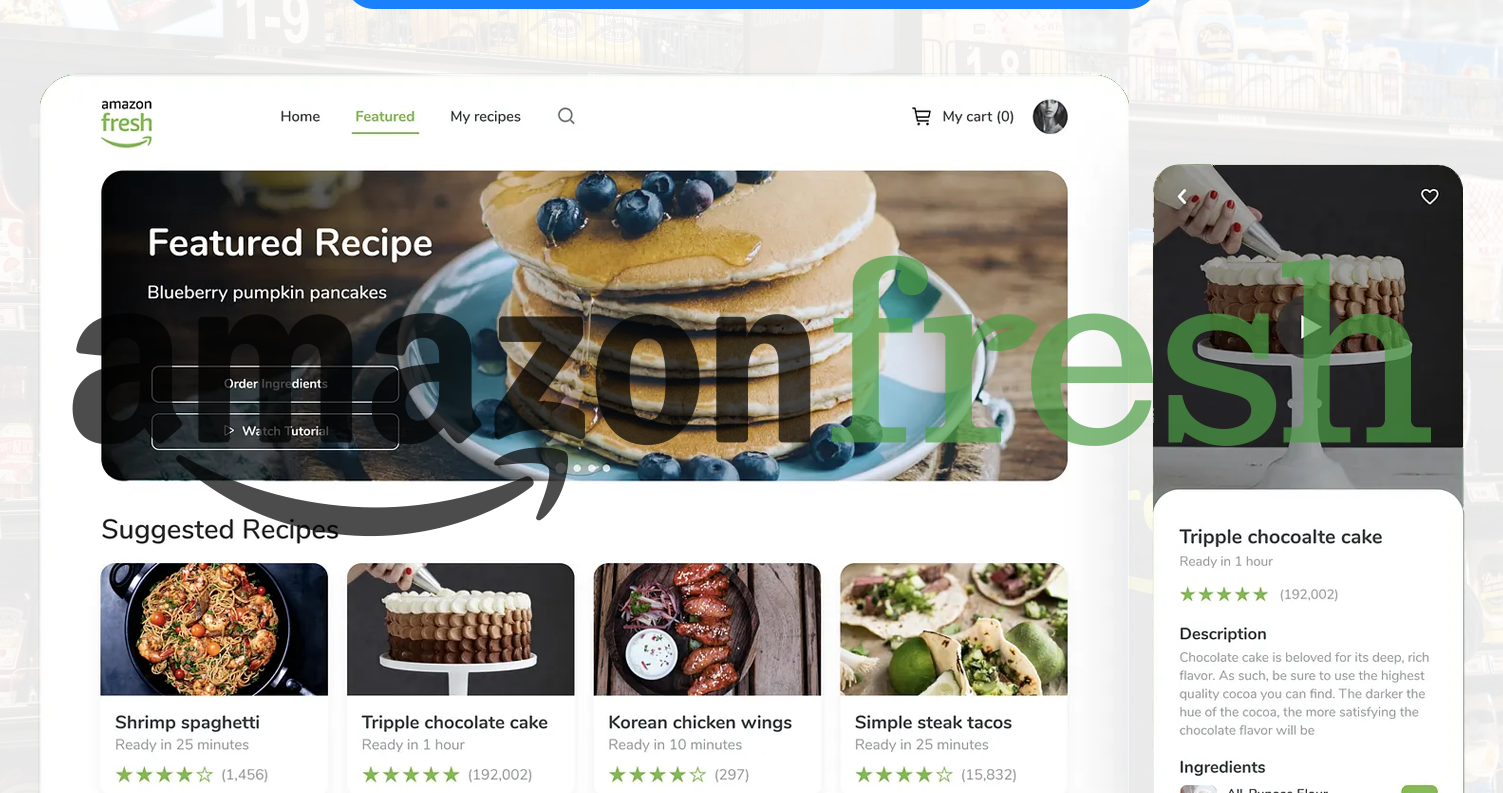
We help businesses Extract Amazon Fresh Delivery Data and turn it into valuable market intelligence.
- Custom Data Collection Solutions : Tailored strategies for product category monitoring, competitor intelligence, and regional market analysis to meet your specific needs.
- Advanced Analytics Platform : Our system offers interactive dashboards, anomaly detection, predictive analytics, and automated alerts for strategic decision-making.
- Expertise Without the Overhead : We manage technical maintenance, platform updates, scalable infrastructure, and data quality enhancements, so you don’t have to.
- Compliance-First Approach : Legal experts ensure regulatory adherence, ethical data collection, and responsible data handling for risk-free insights.
Partner with us to access sophisticated Amazon Fresh Data Scraping—without the complexity of in-house development.
Conclusion
In today’s competitive online grocery industry, Amazon Fresh Data Scraping is essential for optimizing pricing, managing inventory, and understanding customer behavior. Extracting and analyzing Amazon Fresh Grocery Data enables businesses to track trends, benchmark competitors, and improve supply chain efficiency.
We offer legal and efficient solutions with high-quality, structured data API access for a reliable Amazon Fresh Data Scraper. Contact Mobile App Scraping today for customized data scraping solutions and stay ahead in the online grocery market!